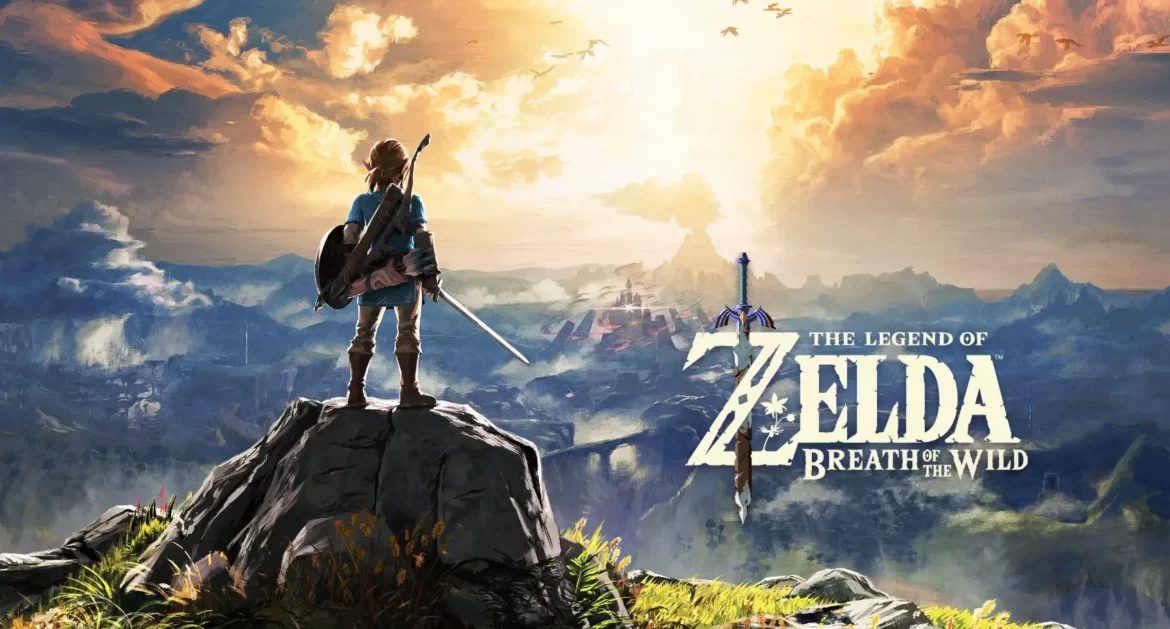Release Date : March 3, 2017
Developer(s) : Nintendo EPD
Publisher(s) : Nintendo
Platforms : Wii U, Nintendo Switch
The Legend of Zelda: Breath of the Wild is finally here. Available on Wii U and Switch starting March 3, The Legend of Zelda: Breath of the Wild is definitely a big success for Nintendo. But after so much anticipation, is it really worth it? Will it take us beyond anything we’ve ever experienced?
First of all, the majority of this review was carried out on Switch, and to avoid any spoilers, we’ve kept the storyline brief. Enjoy your reading!
Table of Contents
The Legend of Zelda Breath of the Wild, an Emotional Journey
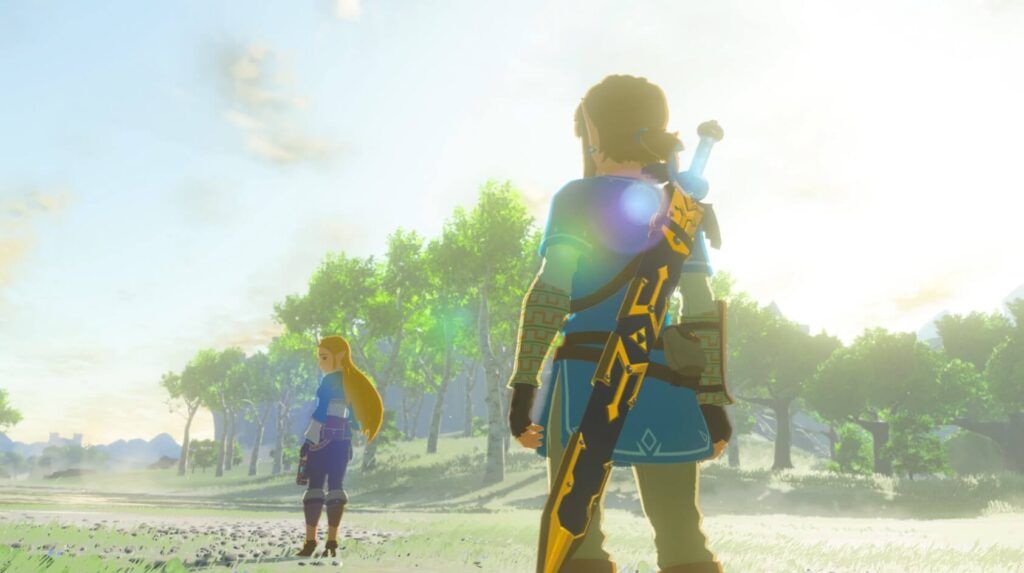
After discovering the Nintendo Switch, we were ready to dive deep into The Legend of Zelda Breath of the Wild, clearly the most important launch game and the Japanese manufacturer’s selling point for its new device. The game is also available on Wii U, but since we only had a brief look at it, we’ll come back to this version a little later in our review to explain how we felt about it.
Our adventure begins when Link wakes up in a cave after a 100-year nap, a scene we’ve already seen many times since E3 2016 through several trailers. A mysterious female voice wakes you up with a simple “Wake up… Open your eyes”. Your hero then gets up, equipped only with a loincloth to cover a part of his body, and we’re left with no idea of what lies ahead.
And so we move forward in the greatest mystery before discovering a famous Sheikah Slate that will be an essential element of our adventure. Then, after a couple of kicks on some chests, we get dressed in an old pair of pants and an old shirt and leave the cave. And then it’s time to discover the world before us, as big and vast as it gets. It doesn’t take long before you feel an incredible sense of freedom, along with a touch of nostalgia when you notice that you’re back for another adventure with Link.
This epic journey with our young adventurer is a true sensorial experience. It’s an invitation to an emotional journey and to nostalgia for previous episodes. Of course, we’ve been waiting a long time for this new opus, and that naturally plays heavily on our emotions, but the developers know how to trigger those feelings. An inspiring soundtrack, the sound of a chest opening that brings back sweet memories and the camera zooming out as you leave the cave are enough to fill us with wonder.
A Memorable Slap in the Face

Once out of the cave, we find ourselves completely lost in this new world. We know nothing about the period we’re immersed in, and have no clue about the main plot. Everything will be revealed as you progress through the adventure. This is an important point to bear in mind: Zelda Breath of the Wild will have you completely loose in the wild.
Of course, the storyline unfolds gradually, and you’ll learn the gameplay mechanics as you discover new options, but there’s no real first chapter that teaches you everything about everything. No. You learn the story as you progress. In fact, you won’t know the historical context until you’ve completed the first stage. To avoid any spoilers, we won’t go into the story itself, preferring to leave you with the pleasure of discovery.
This well-balanced progression is clearly motivating. You want to know more, to get to the bottom of the story, and it’s hard to escape the desire to learn more about the game’s background. The same applies to learning new skills and finding new equipment. We’ll come back to these points a little later, of course, but you’ll soon notice that being well-prepared for combat is a major asset.
We’re not afraid to say it: this is probably one of the hardest episodes of the franchise. And with good reason: we found the difficulty much higher than before. However, let’s not forget that the series is far from being one of the most complicated franchises. While some opuses offered gameplay that was a little harder to master or puzzles that were a little more complex than others, The Legend of Zelda Breath of the Wild is a step above.
We found that several elements were a bit harder to approach, especially for newcomers to the franchise. The fact that you’re dropped into the middle of an open world is obviously one of the main reasons, but you’ll sometimes have to die and try again several times to get the hang of things. It’s up to you to explore the different nooks and crannies to meet certain creatures that we don’t know anything about. While some are easy to kill, others won’t hesitate to kill you in a single blow.
In short, while this is far from a highly complex game with a difficulty level that might put some people off, it still remains one of the most challenging installments in the entire series. This will undoubtedly please a good number of players who were looking for a little more challenge.
Horses Are Cool!
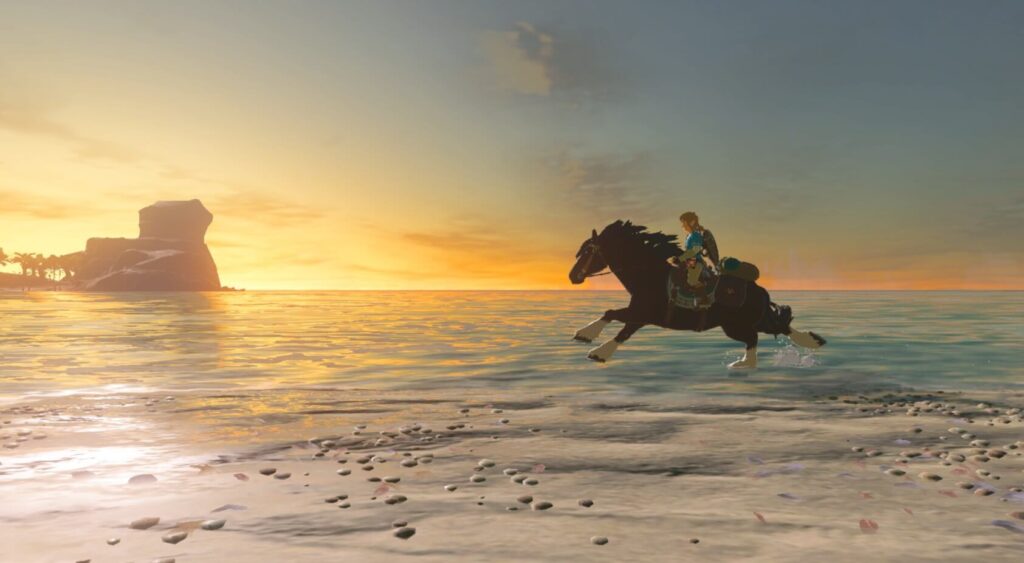
The first stage of the game serves more or less as an introductory chapter. You’ll have the opportunity to discover a few enemies and several environments, such as a small forest, an alpine landscape and so on. This one really serves as an appetizer, and it’s good to note that Nintendo has managed its communication very well, since in the end, all presentations have mainly revolved around this theme. So there’s still plenty to discover, and it’s a pleasant surprise.
The Legend of Zelda Breath of the Wild introduces two new elements that you’ll need to monitor quite frequently through gauges. The first is the notion of temperature, depending on where you are, Link may be hot or cold, and depending on his resistance, you’re probably going to lose some life. For example, if you fall into a river in the mountains, you could die instantly.
Riding through the first snowy peaks will cause you to lose hearts at regular intervals, and you’ll have only two options to counter this problem at the start of the game: either bring enough food with you to survive and eat regularly, or carry a torch to keep yourself warm and maintain a decent temperature.

On the other hand, fire can burn you and cause status alteration. You can light a torch in enemy camps or use a flint to light dark places or keep warm. But use it wisely: running, attacking a target, or defending yourself immediately turns off the torch, and you’ll have to face the cold if you’re in the wrong place. In fact, these heat mechanics are not really stifling in the game. They’re regularly implemented without being too overwhelming. This adds a few hazards to the puzzles and makes you think before climbing the snowy peaks. But that’s as far as it goes. It’s simply nothing more than you’d expect from these few extra additions.
The second gauge is a noise sensor. Also located at the bottom right of your screen, this gauge lets you know how much noise you’re generating. Depending on your movements, you may warn nearby enemies. If you run, Link will make a lot of noise, but if you crouch and move slowly, you’ll have a chance to surprise your opponents. Once again, it’s an additional component that’s not omnipresent, but it does add some welcome infiltration mechanics. Getting behind your enemies’ backs can sometimes give you a significant advantage.
What’s more, it would be pointless to tell you that taking down a few opponents before going after the boss is a good way to ensure the success of your assault. This infiltration aspect is well-constructed, allowing you to approach enemies and shoot an arrow from your bow to gain the upper hand.
Plenty to Do and So Much to Learn…
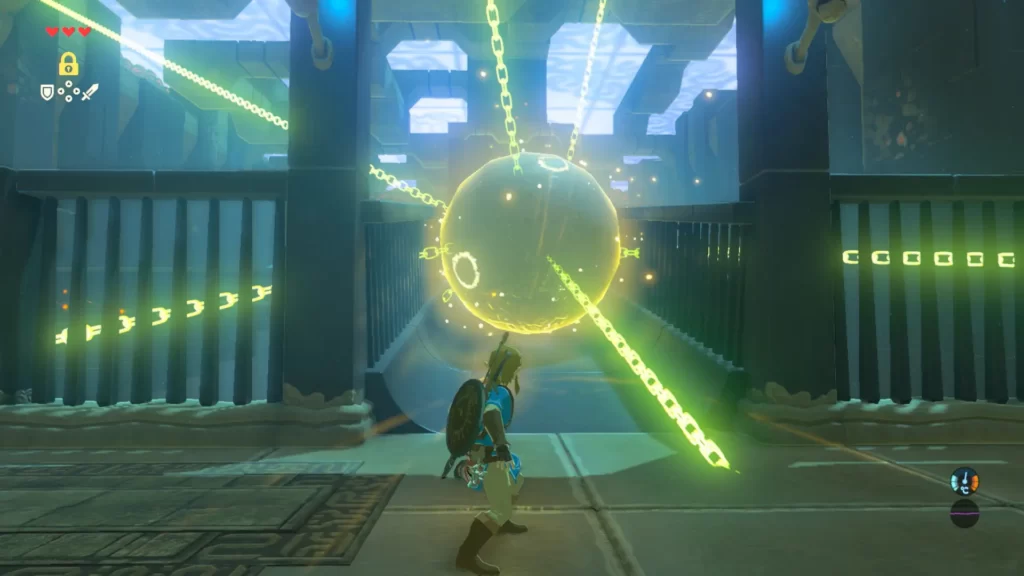
One thing you can’t complain about with The Legend of Zelda Breath of the Wild is its massive content. In addition to a more-than-adequate lifespan, there’s no denying the number of things to do. As an open-world game, you’ll have tons of things to do, and Eiji Aonuma’s team has understood exactly how to fill it with activity. The only thing that bothered us at the start of our adventure was the vast emptiness.
The first few hours spent on the initial stage create a kind of wasteland feeling, devoid of any real elements to explore. Because in the end, if we ignore the nostalgia and discovery of this brand-new world, these deserted places take a while to explore. As you go from shrine to shrine, you learn something about history. Then, after spending several long minutes simply walking, you arrive at a new monster spot. And that’s pretty much it.
To be honest, this feeling of emptiness isn’t very noticeable, and we have to find some sort of flaw in this Zelda, because it’s so incredibly fascinating. After a short while, you’ll be able to tame a horse, allowing you to roam around the game’s vast lands faster. You’ll also be able to use a paraglider, enabling Link to glide in the air over long distances, similar to the parachute in Skyward Sword. You’ll receive it early in the adventure, after completing the first sanctuaries. A fast-travel feature is also available. You can use your Sheikah Slate to traverse the map, choosing a previously visited shrine and teleporting easily from one end to the other.
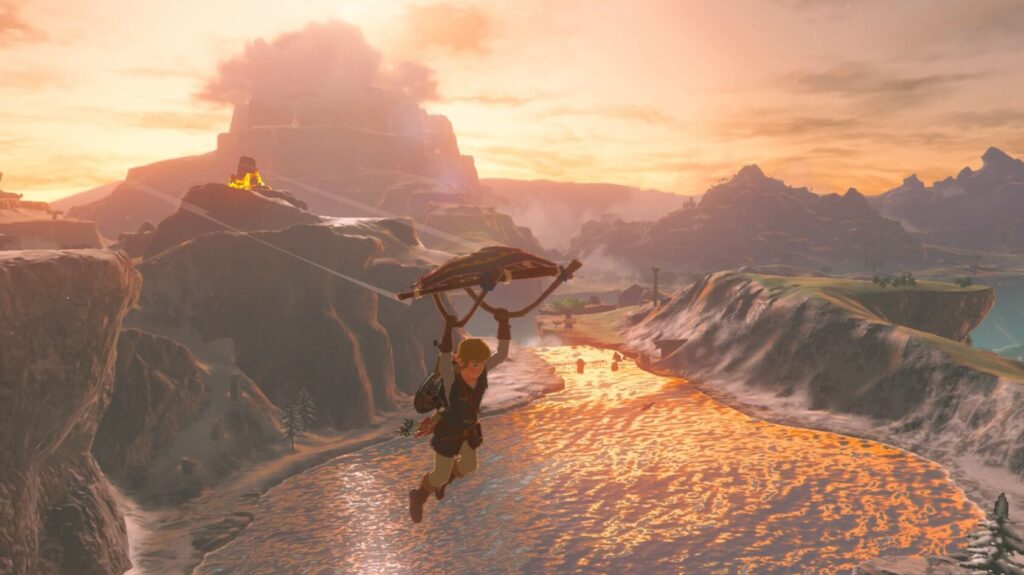
Remaining in the realm of exploration, Link can now climb cliffs. Almost any wall can be climbed, and you can reach the highest peaks with just your arms. However, you must be careful not to let your stamina get the better of you, as you’ll need to estimate how much there is to climb before you risk letting go and getting a game over once you’re on the ground. Most of the big mountains have small platforms in between, so it’s up to you to judge.
There’s also a dynamic weather system that changes on a regular basis. It’s quite common to go from bright sunshine to rainstorms, giving you much poorer visibility. Using the wind with the paraglider is also a smart move, as you can go faster by steering in its direction. A day/night cycle is also included, with the times indicated alongside your other gauges. Aside from the visual aspect, some monsters only appear at night, and you may have to wait a few hours by a campfire to arrive at the right time of day.
Exploration really has that intense feeling in The Legend of Zelda Breath of the Wild. The ability to climb mountains adds a welcome verticality, allowing you to admire environments from the top of a cliff. It’s so satisfying to have this feeling of total freedom, and to be able to stop for a while on high ground to enjoy the view.
We often take a break from our quests to take in the beauty of the landscapes, then make a stop at a goblin post before gathering mushrooms, apples, and other acorns from the forests. There’s almost something rewarding about exploration, as there’s always something to pick up or observe. The artistic touch is perfectly mastered again, and it’s a real visual delight.
Weapons Up, Link!
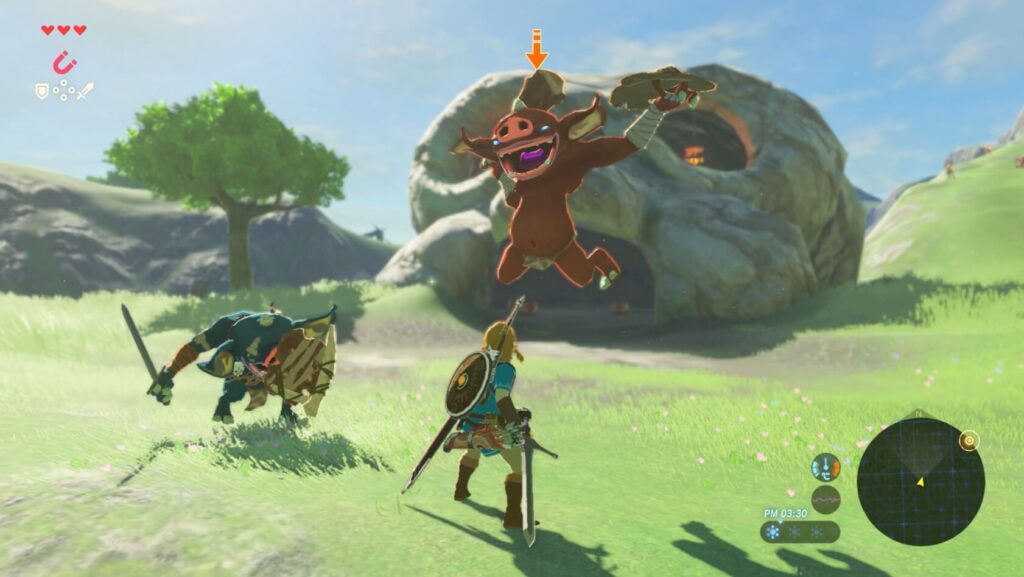
Of course, throughout your exploration, you’ll have plenty of opportunities to fight. Thanks to its rich and varied bestiary, the game features polished gameplay mechanics. The basics of a game of its genre are present here, and perfectly mastered. All you have to do is hammer your action button to deliver a blow to your opponent, but the complexities don’t stop there, and that’s where the wide range of weapons comes into play.
The Legend of Zelda Breath of the Wild offers a generous arsenal, starting with a bow. In fact, this is clearly one of our favorite features: the ability to shoot an arrow right between your opponent’s eyes. All you have to do is aim and shoot. You’ll of course get a bonus if you hit the enemy in the head, and this could guarantee elimination in a single shot. Arrows of various types can be collected, providing additional bonuses or alterations, such as fire or ice arrows.
The differences between the weapons are not just cosmetic. Each weapon, of course, has a power level based on its strength, indicated by an icon and a number, but they also have specific characteristics when you use them. For example, certain lighter weapons will allow you to attack faster, while larger ones will hit harder but slower. Plus, for each type of weapon, the animations are different and won’t necessarily match your expectations. A spear can hit several times in a row in a very short space of time, but won’t do much damage. Your weaponry also includes a shield. Very important in combat, this will enable you to block or parry an attack and spare a part of your health.
The possibilities are numerous, and you’ll find yourself with plenty of weapons at your disposal. Whether it’s a knight’s sword, a rake found in a barn or a tree branch found on the ground despite having something else, the arsenal is truly extensive. Some weapons are more suited to certain actions than others. For example, the woodcutter’s axe can be used to cut down a tree in two strokes, while other weapons take longer. A piece of wood can be used to light a torch, something I think you’ll struggle to do with a sword…

The last thing you need to know about your equipment is that it doesn’t last forever. After several strikes with your weapon, it breaks and is lost forever. A warning message will appear sometime after it becomes damaged, and you’ll need to be ready to change weapons if you’re in combat. A particular attack is interesting in this case: you can swing whatever you have in your hand, much like a spear throw. Depending on your precision, distance, and the nature of your weapon, this can cause great damage, with the counterpart being its immediate destruction.
Link also has certain powers, called runes. These are discovered by completing the very first sanctuaries, although the last rune will not be acquired until later in the adventure. These powers, granted by the Sheikah Slate once again, will enable you to learn additional skills. One allows you to create ice from water, while another can stop the process of certain mechanisms by stopping time for a few moments. With the exception of the bomb, most of these powers are ultimately used to solve the puzzles you’ll face.
Perhaps I’m going to insist on this point, but Zelda Breath of the Wild is well-balanced. Whether in terms of increasing difficulty, progressive storytelling, temperature, novelties, runes, or any other aspect of the game, everything is perfectly mastered. There are a few complexities included, but not too many. Everything is well-balanced, and in the end, even the feeling of emptiness implied at the start of the game is properly addressed. The expansive open spaces are large enough to give an impression of immensity, and just before the player thinks “Ah, it almost feels empty”, he discovers that something really exciting is going on.
Technology Is the Only Problem?
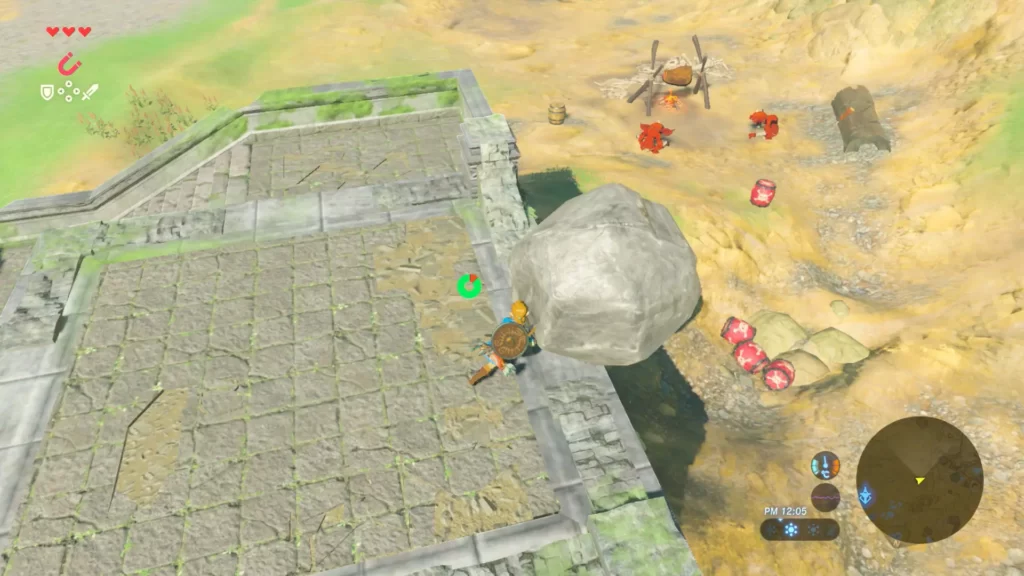
Concerning the Wii U version
It clearly fails to live up to expectations. After testing it for a few hours, it’s easy to see that it doesn’t quite measure up to the Switch version. With aliasing, framerate drops in crowded areas or when there are numerous explosions on screen, it’s far from perfect technically. Loading times, like the menu navigation, are much longer. Plus, the ability to display the game on both screens is no longer available. Zelda Breath of the Wild had presented the gamepad as a second screen, allowing you to display the game map, for example. This is no longer the case, and with good reason: Nintendo wanted the Switch and Wii U versions to have the same layout, which is not exactly what everyone wants. Visually speaking, it doesn’t have the same charm, but that doesn’t mean it’s unpleasant. Our only regret – and the main one – is that the Wii U’s technology is pretty mediocre. Clearly, Big N wanted to put the Switch in the spotlight, and has undoubtedly focused on it since its announcement, which is unfortunate.
This might be one of the title’s only weak points: its technical side. Although I wouldn’t want to characterize a game just because it’s technically imperfect, it’s important to mention it. Despite being the major title of the Switch’s launch, The Legend of Zelda Breath of the Wild is far from bringing perfect stability on the console and clearly struggles to display it.
Of course, as we all know, you shouldn’t judge a game by its graphics, let alone characterize it at the launch of a new console, but it’s important to point this out. Some FPS drops are present, and it’s also not unusual to experience slight display problems. Of course, the Switch version is more than adequate, but as you can see, the Wii U version doesn’t feel the same. This is truly unfortunate, and there was no need for it to be downgraded in this way. Wii U players will feel cheated, and for a good reason.
Finally, one last point that some of you may wish to know: you’ll be able to make multiple saves. So it’s possible to create several save games and choose the one you want when you start the game. What’s more, on the Switch, the console saves automatically, even if you’re out of battery. This means you can pick up exactly where you left off without losing any trace of your progress. There’s also a manual save function, which you can use and even exploit as you see fit.

Conclusion
The Legend of Zelda Breath of the Wild is Nintendo’s main selling point for the Switch. At the expense of a technically imperfect Wii U version that has clearly been sidelined, the Switch version has something extra, and not the least of which is the ability to play in tablet mode, no matter where you are. It’s great to be able to play Zelda in such high resolution, whether in bed, on the sofa or, why not, even on the toilet. More difficult, more immersive, and more open, Zelda Breath of the Wild appeals to our nostalgic hearts, while at the same time potentially attracting a new audience. It’s hard to find any real flaws here, and if we ignore the occasional technical glitch, we’ve got ourselves a real winner. So yes, like any canonical episode, it will divide the community. Ranking right up with Ocarina of Time, The Legend of Zelda Breath of the Wild is, for us, the best opus the series has been able to give us in terms of innovation and unconditional charm.
